The future of healthcare is unmistakably intertwined with the evolution of how we staff and manage our medical institutions. The healthcare staffing industry, already a colossal market entity in the US with a valuation of over $120 billion and a workforce of more than 16 million, stands at the precipice of significant transformation. Demographic shifts, such as an aging population and a rise in chronic diseases, forecast a surge in the demand for healthcare roles. Coupled with this, healthcare staffing agencies have become indispensable to hospitals and other medical facilities, seeking to fill staffing gaps promptly, particularly during periods of increased strain or persistent nursing shortages.
With expectations of substantial growth within the industry, setting a trajectory from $34.76 billion in 2021 to $51.58 billion by 2028, healthcare staffing faces a future driven by the daunting challenge of talent shortages, which are only intensified by global health crises and digital innovations. As 2023 unfolds, the landscape of healthcare employment is reshaped by a trend towards specialised healthcare roles, embracing a new focus on telemedicine, geriatric care, and mental health services. The burgeoning importance of soft skills—such as communication, adaptability, and empathy—in the healthcare sector reflects the broader shift towards patient-centred care and the need for effective teamwork within increasingly multidisciplinary environments. In Australia's healthcare sector, these global trends are mirrored, with Australian healthcare staffing models adapting to these innovative pressures and opportunities.
Emerging Technologies in Healthcare Staffing
Emerging technologies are swiftly transforming healthcare staffing, with artificial intelligence (AI) and machine learning (ML) at the forefront of this evolution. These advancements are practical in predicting staffing needs, optimising schedules to avoid burnout, and enhancing the recruitment process. As such, Australia's healthcare system has begun integrating these technologies to improve efficiency and meet the growing demand for healthcare services. AI-driven platforms are proving to be a game-changer, as they streamline the recruitment process by effectively matching healthcare professionals with suitable job openings, making the hiring sequence more efficient and less time-consuming.
The healthcare sector is experiencing a shift with an increased need for professionals proficient in telemedicine, geriatric care, and emergency response. This shift is underscored by the following dynamics:
Telehealth Proliferation: The pandemic has cemented the place of telehealth within healthcare delivery, which now demands staffing solutions for technology adeptness. This includes remote healthcare professionals who can provide quality care from a distance.
Mental Health Services: The rising prominence of mental health services has led to a surge in demand for skilled professionals in mental health care, addressing a critical and previously under-resourced facet of healthcare.
Learning and Development: The rapid pace at which healthcare evolves necessitates continuous professional development. Employers find themselves in a position where supporting education and training is not just encouraged but required.
The Value of Soft Skills: Besides technical prowess, healthcare professionals are increasingly expected to possess soft skills—communication, empathy, and teamwork—to provide patient-centred care within multidisciplinary teams.
Additionally, the Australian healthcare workforce is witnessing a shift towards prioritising work-life balance and flexibility. There's a noticeable trend where healthcare professionals are seeking roles that offer part-time engagement, malleable hours, and the capacity for remote work. Such preferences align with the desired quality of life, helping to retain talent in the healthcare sector.
On the other end of the spectrum, predictive analytics has emerged as a pivotal tool within healthcare staffing, offering a sophisticated means to forecast staffing requirements. This predictive capability is essential in reducing turnover rates by proactively managing staff levels and mitigating the stressors that culminate in job dissatisfaction. Coupled with the critical need for diversity and inclusion, Australia's healthcare seeks to create a workforce reflective of its culturally assorted communities. This diversity not only improves patient outcomes but enriches the healthcare experience for all levels of society, from practitioners to patients.
The Rise of Telehealth and Remote Care Jobs
The COVID-19 pandemic accelerated the adoption of telehealth, resulting in an upsurge of remote care job opportunities within the healthcare sector. Those aspiring to enter the telehealth field must develop key technological skills, including:
Proficiency in telemedicine platforms and virtual collaboration tools to facilitate consultations and diagnoses from a distance.
Data security protocols to ensure patient confidentiality, aligning with healthcare regulations.
Familiarity with emerging tech like AI for diagnostics, virtual reality for therapy, and blockchain for data security to stay ahead in an evolving industry landscape.
In light of this, specific roles have gained prominence in Australia healthcare, catering to the need for remote care. These include:
Telemedicine software developers, tasked with creating robust platforms that enable remote medical services.
Remote patient monitoring specialists who oversee patients with chronic conditions, ensuring timely medical intervention.
Virtual healthcare consultants providing expertise on delivering quality care remotely.
Adapting to telehealth roles garners its own set of challenges. Healthcare professionals must bridge the gap between technology and healthcare domains while diligently adhering to healthcare regulations. To succeed in the remote telehealth environment, practitioners should develop effective communication strategies, balance work-life scales carefully, and remain abreast with industry updates.
Tools beneficial for remote healthcare teams include diverse communication platforms for seamless collaboration, wellness applications for patient self-care, and industry news and updates platforms to keep the team informed. Telehealth consultations skyrocketed in Australia with the pandemic, especially for managing diseases like diabetes and mental health disorders. These remote interactions have not only enabled better disease management but have also opened avenues for AI and machine learning to personalize treatment plans and automate aspects of care.
Looking ahead, the challenges in telehealth involve overcoming the digital divide to provide equitable access to all Australians, ensuring data security, and maintaining patient privacy. Companies are increasingly adopting virtual care services, including tele-medicine and remote patient monitoring, to manage their workforces' health effectively. Essential for this transition are tools that provide 24/7 access to medical care, real-time notifications, and robust follow-up measures. As seasons change and restrictions relax, it's imperative for healthcare providers to integrate telehealth platforms into their business continuity strategies to mitigate risks, enhance employee well-being, and ensure seamless delivery of healthcare services.
Innovative Training and Development
Innovative technologies are revolutionising the landscape of healthcare training, providing dynamic and user-centric learning experiences. Techniques such as Augmented Reality (AR) and Virtual Reality (VR) are transforming traditional educational methodologies by offering immersive simulations that mimic real-life medical scenarios. This hands-on approach not only enhances the proficiency of healthcare professionals in Australia's healthcare system but also prepares them for the intricacies of patient care.
Immersive Simulation Technologies: VR training tools recreate complex medical situations, enabling professionals to hone their skills without the risks associated with real-life procedures. Similarly, AR applications present interactive layers of information onto the physical world, aiding in complex tasks such as surgery or diagnostics.
Gamification & Role-playing: Engagement is critical in learning, and incorporating game elements into healthcare training programs boosts motivation and enjoyment. Role-playing activities simulate patient interactions, sharpening communication and critical decision-making skills essential in real-world settings.
Artificial Intelligence (AI) is another key player, personalising learning experiences by identifying individual strengths and weaknesses. Wearable technology, like smart glasses, further support training by offering real-time insights and guidance. The learning environment is evolving to accommodate remote learning and telemedicine, which have become critical to global healthcare delivery.
AI & Personalized Learning: AI algorithms adapt training modules to fit the learning curves of individual practitioners, creating a customised educational journey and maximising knowledge acquisition.
Wearable Tech & Real-time Feedback: Devices equipped with sensors provide live data during training sessions, from monitoring vitals to guiding procedural accuracy, thus enriching the learning process.
Implementing innovation in healthcare training is a multi-faceted endeavour, and Australian institutions are leading the way with programs that blend practical skills with leadership and project management. The health services innovation training program co-designed by the Australian Centre for Health Services Innovation and the Royal Brisbane and Women's Hospital is structured in four comprehensive units — each aiming to embed innovation as a core aspect of medical education.
Team-based Learning & Continuous Improvement: Collaborative learning strategies are embedded within these programs, fostering a culture of teamwork and lifelong learning, which is pivotal for an agile healthcare workforce in Australia.
Entrepreneurship & Innovation Skills: The AUSCEP program and Frameless Interactive's Learnsuite Health epitomise the commitment to nurturing healthcare entrepreneurship, by equipping professionals with the skills to innovate, from concept to execution.
Efforts to diversify training programs continue, with an emphasis on recruiting and empowering women and underrepresented groups. The goal is not only to make Australia healthcare more inclusive but also to enrich it with a plethora of perspectives and ideas. As remote learning grows alongside technologies like AI, the need for healthcare professionals to be skilled in teleconsultations is met by integrating telemedicine into training modules, ensuring that the healthcare workforce is ready to navigate the continually evolving digital landscape.
Adopting Agile Staffing Models
In response to the ever-changing landscape of patient needs and healthcare delivery, Australian healthcare organisations are increasingly embracing agile staffing models. This innovative approach involves structuring the workforce in such a way that it can quickly adapt to unpredicted changes and fluctuations in demand. Agile staffing breaks down projects into short, manageable 'sprints', a method that not only allows healthcare providers to readily adjust to new requirements but also encourages the integration of feedback from crucial stakeholders, including patients.
Key components of agile healthcare staffing include:
Temporary Staffing: Healthcare facilities can now tap into a pool of qualified temporary workers who can step in at short notice, ensuring patient care remains uninterrupted during peaks in demand.
Cross-Training: Staff are trained across multiple roles, which creates a more versatile workforce capable of responding to various scenarios and reduces the chances of staffing shortfalls in critical areas.
During the height of the COVID-19 pandemic, the adoption of an agile workforce emerged as a survival strategy for many healthcare facilities. The model proved indispensable in balancing the pressing need for personnel due to the surge in patient numbers alongside worker safety and fluctuating regulatory and economic conditions. The agile workforce model facilitates:
Flexibility amidst change: Aligning staffing levels with dynamic payor arrangements and fluctuating volumes of work. Healthcare organisations can adjust quicker to regulatory changes and shifts in the labour market.
Affordable Quality Care: By utilising Contract Staffing, healthcare facilities can maintain the balance between offering high-quality patient care and managing costs effectively.
Australian healthcare systems are also recognising the advantages of Hybrid Staffing Models. These combine various staffing approaches to deliver a bespoke solution tailored to the unique needs of healthcare organisations. The benefits are multi-fold:
Resilience: By employing a mix of permanent, contract, and temporary staff, healthcare facilities can buffer against sudden changes, ensuring stability in patient care.
Cost-efficiency: Flexibility in workforce composition helps to optimise budgets, making staffing costs more predictable and controlled.
As the Australian healthcare sector continues to strive towards innovative patient care, the move towards an agile, flexible workforce is inevitable. Not only does this model cater to the contemporary demands of the healthcare environment, it also aligns with the growing preference among healthcare workers for flexible and interim work opportunities commonly found in the 'gig economy'. By embracing this new wave of agile staffing, hospitals and medical centres are positioned to support continuous process innovation, restructuring workflows, and optimising the use of human capital, thereby maintaining Australia's healthcare as a leader in efficiency and quality.
Embracing Diversity and Inclusion
The Liaison Committee on Medical Education (LCME) has set a precedent since 2009, establishing diversity accreditation standards that compel medical schools to attract and retain students from an array of backgrounds. This initiative recognises that a diverse healthcare workforce is not just a societal obligation but a crucial asset to the industry. Persistent efforts to diversify the healthcare staffing landscape are reflected in guidelines and standards adopted by providers such as Arch Staffing and United Health Care Staffing, striving to mirror the heterogeneity of the communities they serve.
Healthcare organisations intent on harnessing the power of diversity often implement the following best practices:
D&I Training Programs: Offering comprehensive diversity and inclusion training to all employees to foster an environment of mutual respect and understanding.
Employee Resource Groups: Creating platforms for staff from underrepresented groups to voice their experiences and incite organisational change.
Diversity Metrics: Developing and tracking diversity metrics to inform strategy and measure progress effectively.
Studies corroborate the benefits of having diverse healthcare teams, associating them with superior innovation, decision-making, and patient outcomes, including heightened patient satisfaction and diminished readmission rates. Patients often relate more to healthcare providers who reflect their own racial and ethnic demographics, underscoring the importance of having a hospital staff that is representative of the population it serves.
To systematically infuse diversity and inclusion into the very fabric of their organisations, healthcare providers must:
Set Clear DEI Goals: Articulating concrete diversity, equity, and inclusion objectives to guide organisational policy and practice.
Audit HR Practices: Examining hiring and promotion practices to eliminate unconscious bias and ensure equitable opportunities.
Recruitment Efforts: Expanding recruitment efforts beyond traditional channels, tapping into diverse talent pools.
The sweeping disruptions caused by the COVID-19 pandemic have amplified the importance of diversity and inclusion, as an homogenous healthcare workforce faces challenges in serving a richly diverse patient base. Effective DEI initiatives then should begin with explicit communication of benefits such as improved service quality and safety, thereby cementing a commitment amongst all staff. By effectively employing DEI principles, healthcare organisations in Australia stand to elevate the quality of patient care, attract exceptional talent, and ultimately achieve organisational success, setting a benchmark for the rest of Australia's healthcare industry to follow.
Strategies for Addressing Healthcare Worker Shortage
The escalating healthcare worker shortage presents multi-dimensional challenges in the US and globally, significantly impacting patient care. A staggering 31% of nurses consider leaving direct patient care within the next year, highlighting the urgency of addressing this critical issue. In the US, an estimated shortfall of 134,000 physicians by 2034 completes a grim projection, underscoring the need for innovative and effective strategies to mitigate this growing concern.
Strategic Measures to Tackle Healthcare Worker Shortage:
Embrace Technology and Telehealth: Australia's healthcare has already seen the potential of telehealth in reaching remote communities, but its role in workforce efficiency is equally vital. By integrating digital tools and virtual care platforms, the industry can expand patient volumes without overextending the existing workforce. Telehealth also allows for the sharing of expertise across borders, alleviating localised shortages.
Redefine Work Environments: To attract and retain healthcare professionals, it is imperative to enhance the employee value proposition. This involves creating a rewarding work atmosphere that minimises administrative burdens, offers competitive pay, and prioritises well-being through measures such as flexible scheduling and wellness programs to combat burnout.
Revise Legislation and Licensing: The adoption of nationwide licensing would streamline professionals' mobility and ensure a more even distribution of skilled healthcare workers across various regions. Simplifying and synchronising licensure processes across states can expedite the availability of healthcare staff where they are needed most.
The healthcare industry must also pivot towards human-capital solutions to rejuvenate its workforce:
Incentivise Education and Training: Addressing nursing shortages starts with education access. Providing scholarships and loan repayment programs can make healthcare careers more appealing. Moreover, bolstering partnerships between universities and community healthcare settings can surge the volume of trained professionals ready to tackle real-world challenges.
Community Reflective Recruitment: Intentional recruitment of students from diverse backgrounds to reflect the communities they serve can strengthen the connection between healthcare providers and patients, thereby enhancing care quality and mitigating disparities.
Encourage Practice in Underserved Areas: Incentivizing healthcare graduates to work in rural and tribal communities can be pivotal in reducing geographical gaps in care. This might include allowances for remote practice, subsidies for relocation, or additional professional development opportunities.
Finally, the innovation in training and practice must be supported at structural levels:
Facilitate Scope-of-Practice Regulations: Amending state-level regulations allows health professionals to practice to the full extent of their training, increasing patient access to care and making efficient use of the healthcare workforce.
Accreditation Flexibility: Encouraging accrediting bodies to endorse novel and flexible training models can help healthcare education evolve to meet the exigencies of modern healthcare delivery, breaking down traditional silos that limit interdisciplinary learning and practice.
The healthcare community faces a formidable task in addressing these shortages. Yet, with strategic planning focused on innovative recruitment, education, and retention strategies, coupled with leveraging technology, there remains hope to revitalize the healthcare workforce and ensure quality patient care in the US and beyond.
Conclusion
In conclusion, the healthcare staffing industry is navigating a dynamic and challenging landscape, driven by demographic shifts, technological advancements, and evolving patient needs. This article has encapsulated the focal transformations within the sector, from the proliferation of telehealth and remote care roles to the adoption of agile staffing models and the embracement of diversity and inclusion. These pivotal adaptations underline the industry's commitment to providing patient-centred care while addressing the pressing demands for workforce expansion and diversification.
The strategic measures explored herein, including embracing telehealth, revitalising work environments, and amplifying education and training initiatives, are paramount to bridging the gap in healthcare worker shortages and enhancing the industry's resilience. As we look towards the future, it is imperative that the healthcare sector continues to innovate and adapt, ensuring the delivery of high-quality care and the sustenance of a robust and diverse workforce that is reflective of and responsive to the communities it serves.





